
The Musée d’Ethnographie of Geneva (MEG) and the Musée Barbier-Mueller have coexisted in the same city since 1977. What they have in common is the study and celebration of the creativity of cultures from the five continents. The MEG, however, is a museum of ethnography, with a great diversity of objects and documents to provide information about these cultures, whereas the Musée Barbier-Mueller is an art museum, where the most accomplished masterpieces of great artists, known or anonymous, from the most varied traditions stand side by side. Another fundamental difference is that the collections in the MEG are of very diverse provenances and have been shaped by generations of directors and curators, while the collections of the Musée Barbier-Mueller can be attributed to the eye of its founder, Jean Paul Barbier-Mueller, who took on the mission of developing a collection begun by Josef Mueller in 1907. The MEG is now honoured to welcome, for the duration of the Barbier-Mueller’s anniversary events in 2017, these few pieces, some of the most important from the art museum’s Oceanic collection.
Boris Wastiau, Director of the MEG
-
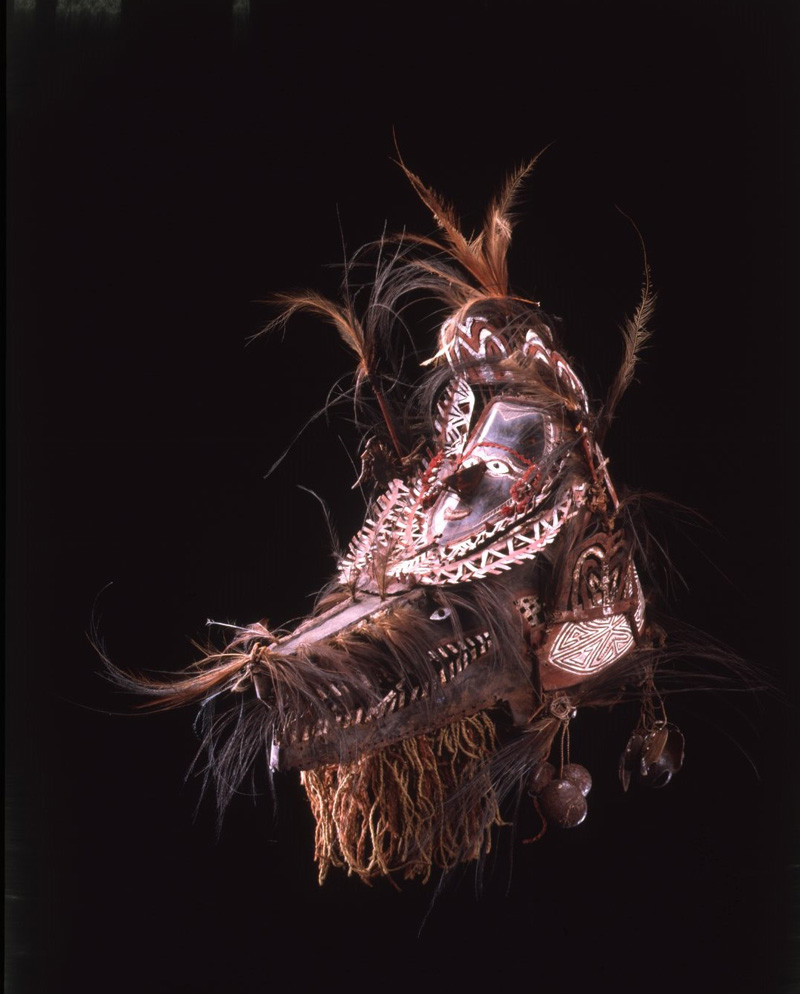
Composite mask. Australia, Queensland, Torres Strait, Mabuiag Island. 19th century. Turtle shell, salvaged metal, bark, seeds, freshwater mussel shells, goa nuts (galip), cassowary feathers, wool. H. 77 cm. Former Staatliches Museum für Völkerkunde, Dresden, since 1875, exchanged in 1985. Collected by Reverend Samuel McFarlane between 1871 and 1872. Inv. 4244. Musée Barbier-Mueller, photo Studio Ferrazzini Bouchet.
-
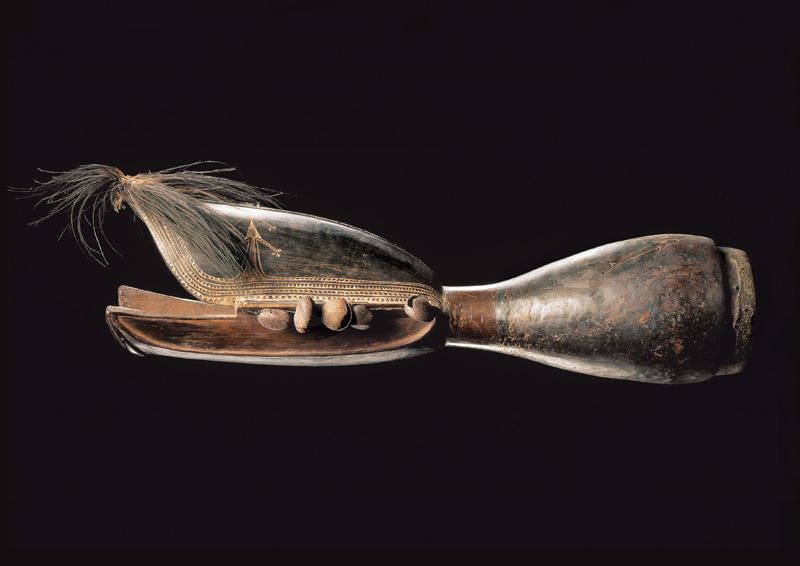
Large warup drum. Torres Strait, Daudai or Saibai Island region. Wood, lime inlays, cassowary feathers, goa nuts (galip), lizard skin membrane L. 91 cm. Former Barbier-Mueller collection. Inv. 4240. Musée Barbier-Mueller, photo Studio Ferrazzini Bouchet.
-
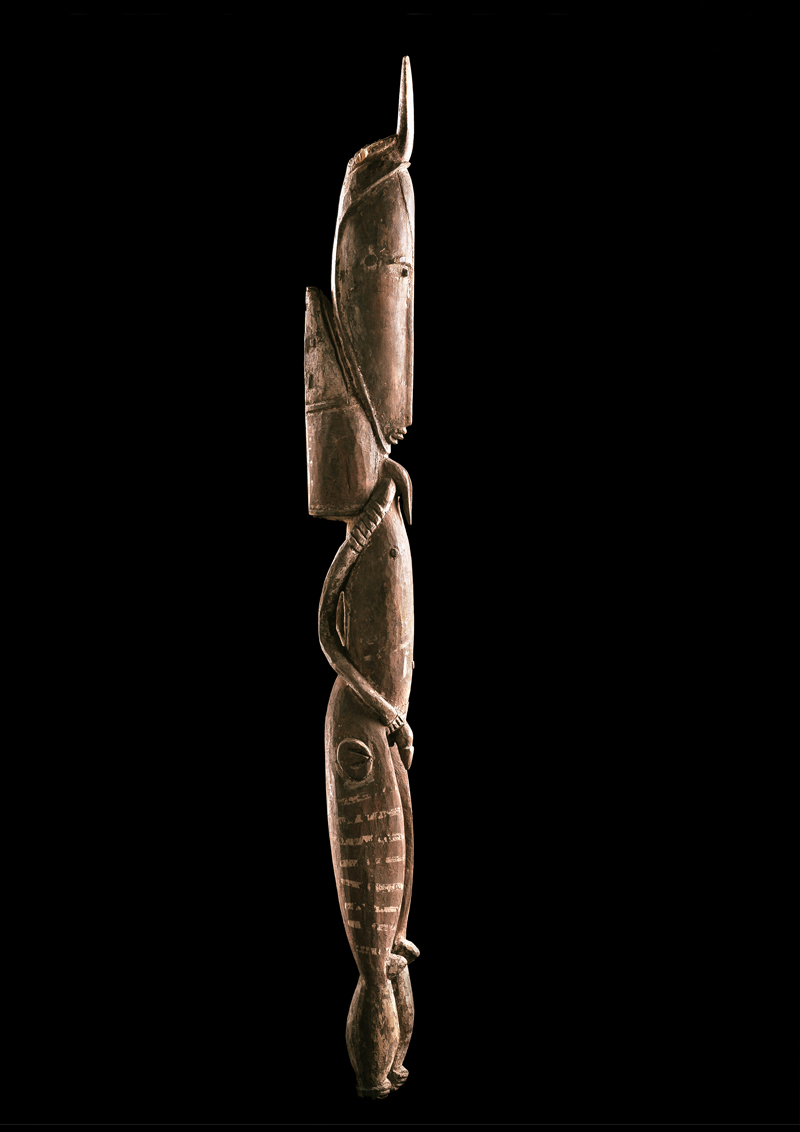
Male anthropomorphic figure. Wosera, Maprik District, Papua New Guinea. 20th century. Polychrome wood. H. 135 cm. Former Barbier-Mueller collection. Inv. 4080-7. Musée Barbier-Mueller, photo Studio Ferrazzini Bouchet.
-
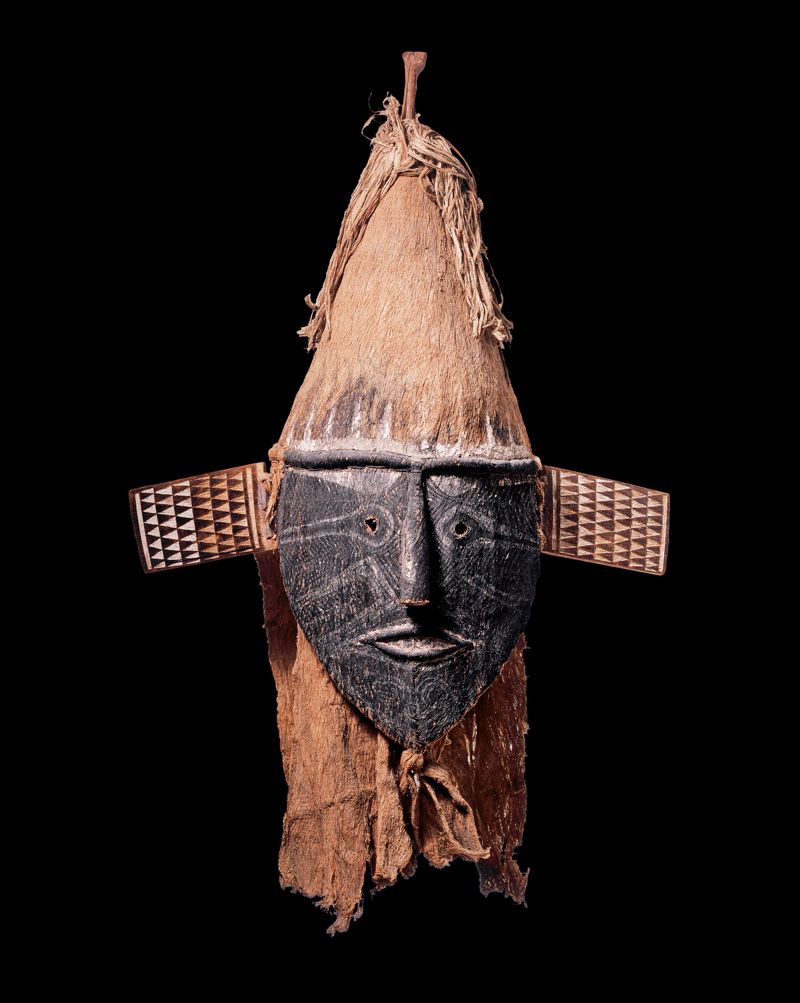
Face mask. Papua New Guinea, Bismarck Archipelago, Green Islands Archipelago, Nissan. 19th century. Basketwork, wood, resinous coating, pigments, barkcloth (tapa). H. 59 cm. Former Linden-Museum Stuttgart, Barbier-Mueller collections, collected by R. Parkinson c.1903. Inv. 4503. Musée Barbier-Mueller, photo Studio Ferrazzini Bouchet.
-
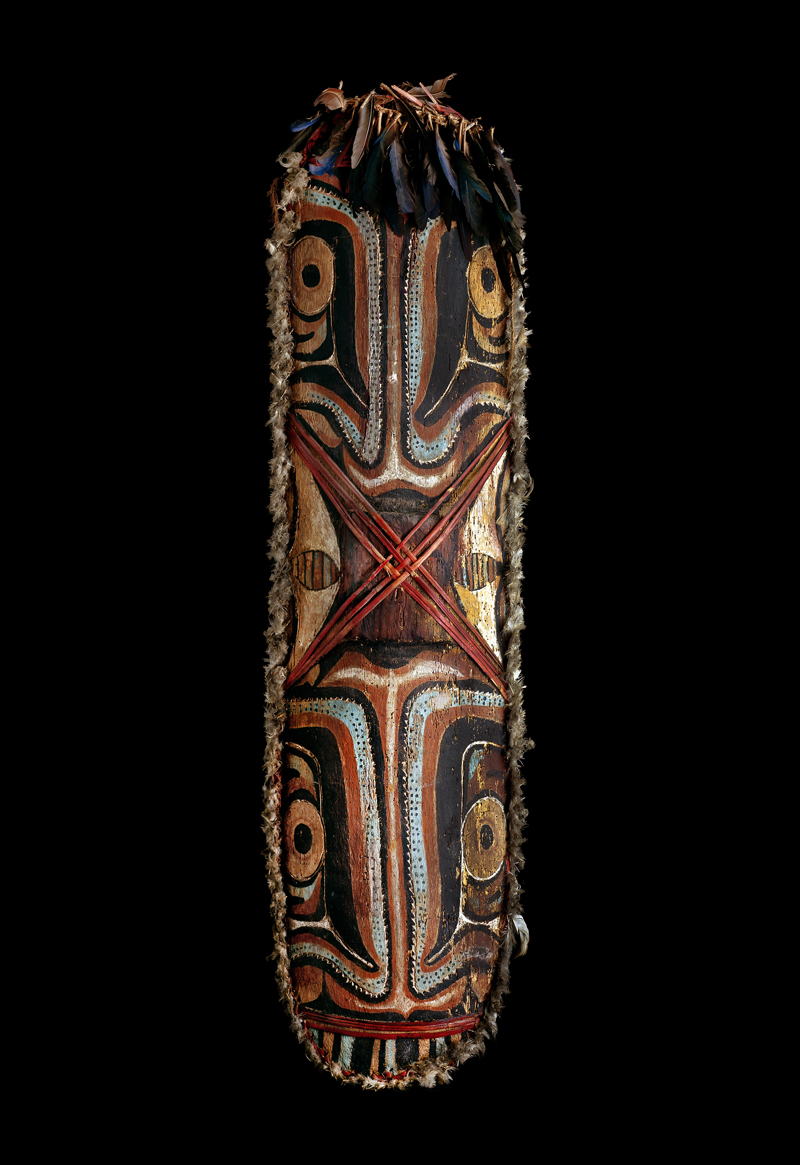
Shield. Sulka or Mengen, Papua New Guinea, New Britain, Southeastern coastal region. Wood, plant pigments, rattan, feathers. H. 118 cm. Collected by Bruno Mencke before 1901. Former Linden-Museum Stuttgart, Barbier-Mueller collections. Inv. 4451-D. Musée Barbier-Mueller, photo Studio Ferrazzini Bouchet.






